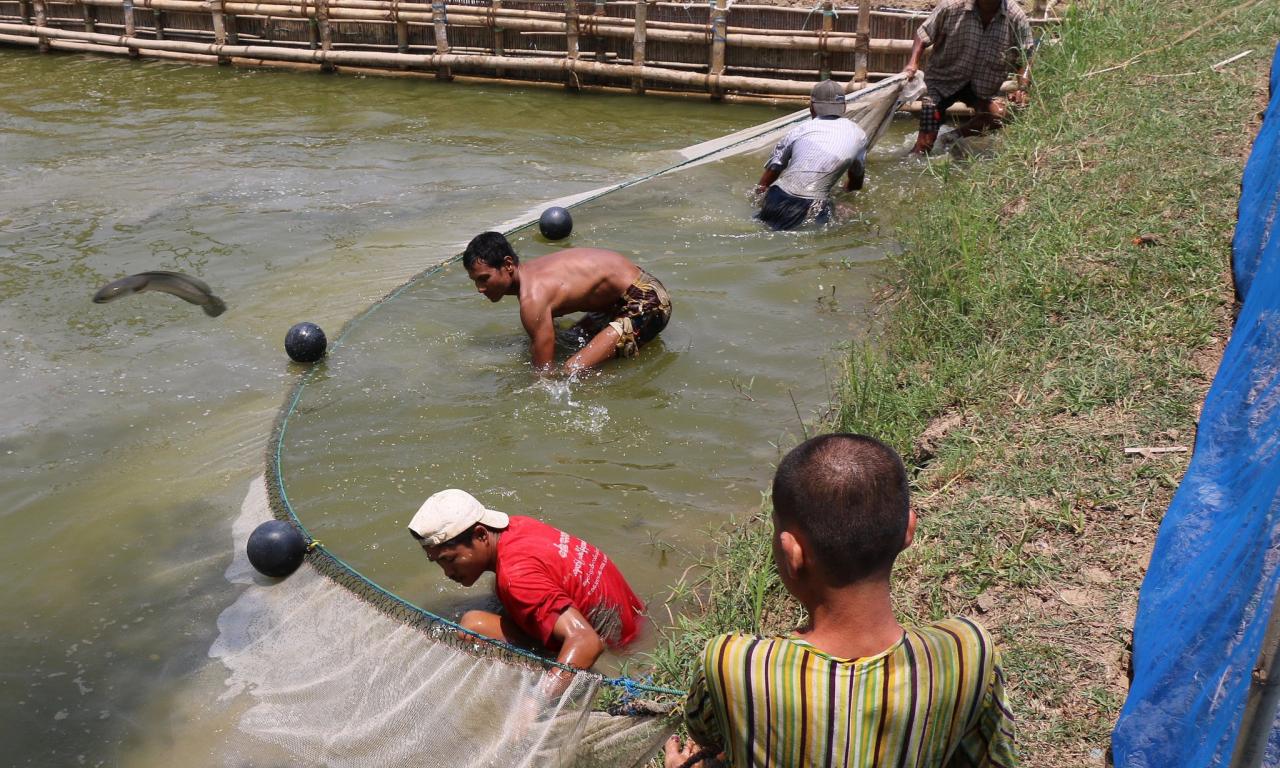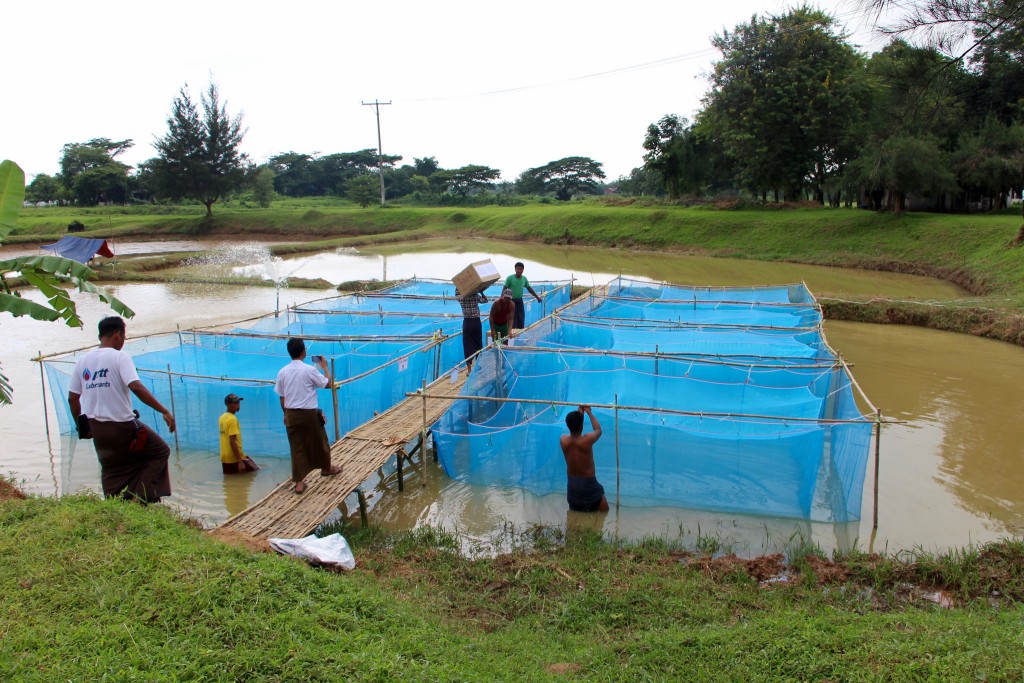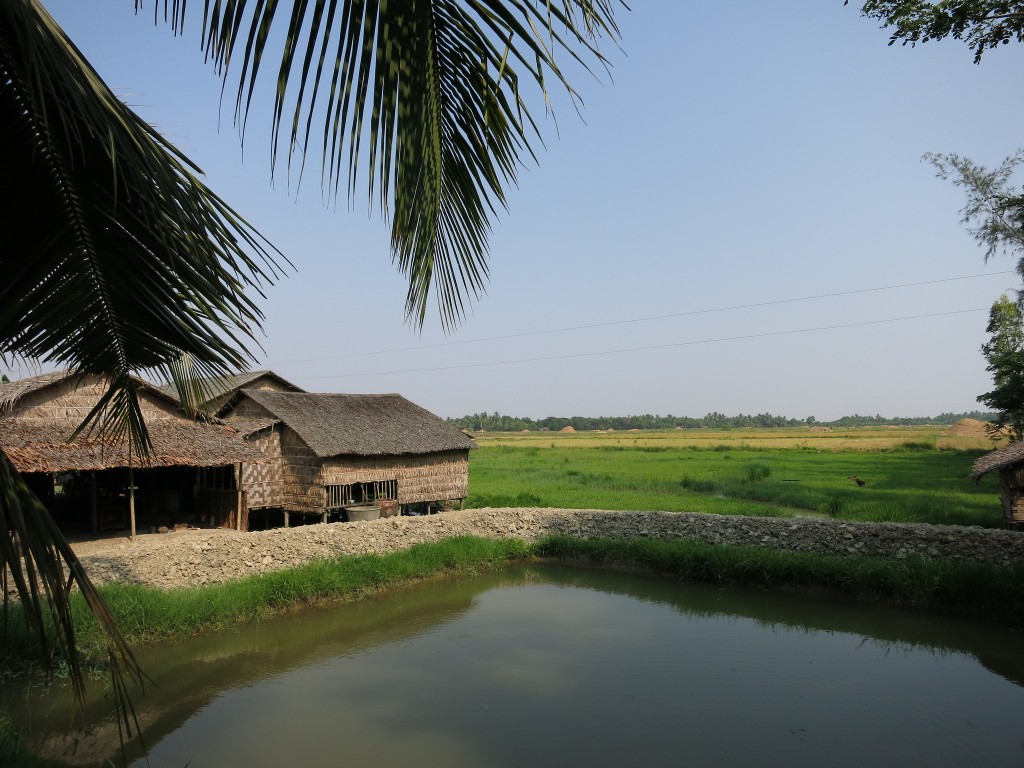
Despite the recent growth of aquaculture in Myanmar, the full potential of aquaculture to drive rural economic development and contribute to food security is still unrealized, according to research funded by USAID and the Livelihoods and Food Security Improvement Trust (LIFT).
Recommended publications
- Aquaculture in transition: Value chain transformation, fish and food security in Myanmar
- Myanmar fisheries: Aquaculture
After more than 50 years of isolation and economic stagnation, the resumption of democracy in Myanmar presents a unique opportunity for regeneration. And with 70% of the country’s population living in rural areas, agriculture—including aquaculture—has a key role to play in this process.
Aquaculture in Myanmar has grown rapidly over the last 10 years, and is important source for domestic fish consumption. Despite this, the full potential of aquaculture to drive rural economic development and contribute to food security is still unrealized, according to research funded by USAID and the Livelihoods and Food Security Improvement Trust (LIFT).
The vital contributions of aquaculture
There are several reasons why aquaculture can make significant contributions to both rural economic growth and broader food and nutrition security goals.
First, aquaculture is capable of generating much higher returns per unit area of farmland than those from widely-cultivated staple crops such as rice, making it very attractive to farmers.
Second, demand from commercial fish farms for labor, goods and services create economic multipliers in rural areas, by providing business opportunities for small and medium enterprises (SMEs) and employment for workers along the value chain.
Third, fish plays an important role in the Myanmar diet. Households spend nearly as much money on fish (14% of food expenditure) as on rice (19% of food expenditure). Fish is also the most important source of dietary micronutrients (vitamins and minerals), that are especially important for child development in a country where nearly a third of infants are undernourished.
Rapid growth, but full potential still unrealized
Currently, aquaculture supplies 20% of domestic fish consumption.
In the last 10 years, fish production in the Ayeyarwady Delta is estimated to have increased by 250%, and the area of ponds in this region, which accounts for 90% of Myanmar’s farmed fish, is estimated to have doubled.
Experience from elsewhere in Asia shows that demand for fish will grow fast as the country urbanizes and becomes better integrated by improvements in transport and communications, and as average incomes rise.
Aquaculture is ideally placed to meet this demand, while raising farm incomes and creating employment.

Despite the aquaculture sector’s growth, the full potential of aquaculture has not yet been harnessed. This is the finding of the Aquaculture in transition: Value chain transformation, fish and food security in Myanmar working paper.
The research led by Michigan State University, the Centre for Economic and Social Development, and the International Food Policy Research Institute, is the most comprehensive assessment of Myanmar’s inland aquaculture value chain to date. It combined in depth interviews with over 250 value chain actors and a structured survey of 1100 households from areas with high concentrations of fish ponds.
Key research findings
The study uncovered unique findings that are at odds with conventional wisdom about fish farming in Myanmar.
Many smaller farmers find it difficult to participate in the sector
This is due to regulations prohibiting the conversion of paddy land to other uses. This land use policy is the historical legacy of previous governments, whom placed heavy emphasis on protecting rice cultivation to ensure national food security.
The pursuit of agricultural diversification into higher value crops such as fish is now a more appropriate strategy, given the need to raise rural incomes, respond to changing patterns of consumer demand and meet to nutrition security needs.
Furthermore, fish ponds cover an area just 1.1% the size of that under rice paddy in Myanmar, meaning that even a doubling of pond area would have negligible impacts on rice production.

Increases in fish production have come mainly from large enterprises
The research finds that government has historically favoured large enterprises.
Many of these farms have been constructed on land allocated by previous governments as part of concessions, sometimes resulting in negative impacts on communities from which land was confiscated.
At the same time, these very large farms, which are often vertically integrated (incorporating production of seed and feed with farming and marketing) are likely to create fewer economic multiplier effects than large numbers of smaller farms, which must source inputs and harvest and sell fish by making use of the services of numerous SMEs.
High fish feed prices and heavy reliance on a single fish species
Myanmar has the highest manufactured fish feed prices in Asia.
Farming is dominated by a single fish (rohu), produced in semi-intensive farming systems, with few alternative technologies adopted or species farmed.
Limited access to affordably priced sources of credit and the lack of a skilled specialist workforce needed to provide support services (e.g. aqua-vets) also contribute to less than optimal performance.
Future opportunities for aquaculture in Myanmar
Key policy reforms and investments can rebalance the farm sector and boost and diversify production, leading to bigger positive impacts and more equitable outcomes for all.
To achieve this vision there need to be:
- fewer restrictions on land use, allowing rural households the freedom to farm in whatever way they choose
- better access to formal credit for fish farmers and other small and medium enterprises in the value chain
- increased private investment and competition in the feed sector (to bring down cost to the farmer and improve quality)
- greater development of ‘hard’ infrastructure (roads, electricity and water control to increase efficiencies all along the supply chain)
- public investments in seed production technologies for promising species (building upon past successes in this area to encourage technological and product diversification for farmers)
- more development of ‘soft’ infrastructure (human capital, extension and veterinary services, to support more responsive public and private service provision for farmers in areas such as disease control).
Aquaculture already makes a vital contribution to domestic food security. And it’s clear that fish farming has great potential to drive rural development in Myanmar. But with policy changes and greater investment these contributions can be even greater in the future.
Note: The contents of this blogpost are the responsibility of the author, and do not necessarily reflect the views of the research funders.